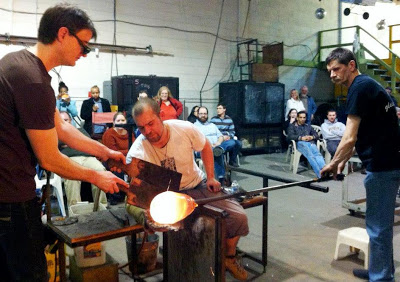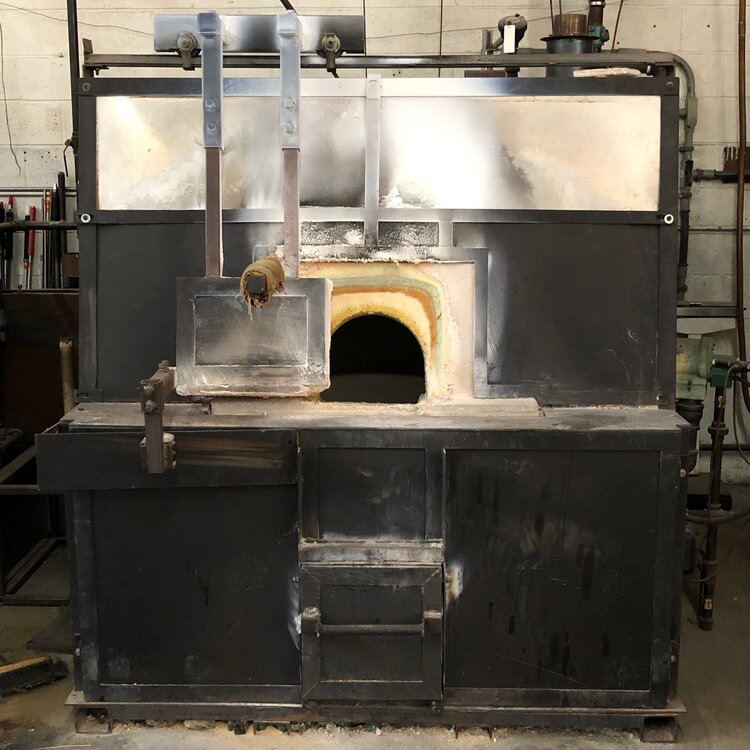DC GlassWorks – one of the glass studios integral to Washington DC’s contemporary art scene – has announced its closing.

DC GlassWorks studio held many important events. UK artists Phil Vickery and Roger Tye demonstrated at DC GlassWorks as part of an international exhibition of glass and clay artists in 2013.
David D’Orio, the artist-entrepreneur who founded the hotshop with four other artists (Graham Caldwell, Jesse Caldwell, Alger Dole, Wyndell Williams, David DOrio) in 2001 said that the changes in the studio’s surrounding area made it impossible to continue.
Washington Glass School considered DC GlassWorks a “sister school” and held many crossover classes and events with them. We knew what an important part DC GlassWorks was to our art community. Its closing will leave a space in our hearts and our cultural melting pot.
From DC GlassWorks:
The past few years have been challenging for the studio. Our neighboring businesses have changed and, unfortunately, the business models of these new neighbors have forced us to reduce our events and offerings. In the end, location matters. Good neighbors’ matter. It is in this context that we find we can no longer continue offering glassblowing and will be closing the studio over the next month.
It has been a great run and we would like to thank all the studio artists, visiting artists, students, bands, patrons, and everyone else who have supported DC GlassWorks over the last fifteen plus years. We have had the pleasure to teach many hundreds of students of all ages and backgrounds, have hosted movie nights and countless open houses, had the pleasure to host many national and international artists, and tried to pass on our knowledge of glassblowing and sculpture to all who came to the studio. We have had great times, made great art, and hopefully enriched the lives of all persons who we interacted with.
DC GlassWorks was founded on the idea that glassblowing should be accessible to all persons and became a place where a person could start off with no glass experience and, through training, hard work, and perseverance, could make the work they wanted to make and could give back to the greater glass community. Our goal was to foster self-sufficiency so that students were prepared to work in whatever studio they ended up at. We’ve always taught that it was important for all glass artists to make sure they are involved with assisting and teaching. It is heartwarming to see so many former students still working in glass and giving back to the community.
Our parting wish is that students find a place to learn glass that fosters their creativity and self-sufficiency; where people are taught how to blow glass without having to take perpetual ‘private lessons’ before gaining access to equipment; and a place that guides student to a level where they are free to blow glass without having to pay someone to assist/supervise them. We also hope our renters find places they can work that allows them the ability to work without having to befriend the owner, work like indentured servants, or have a specific pedigree or education just to get access to glassblowing facilities. DC GlassWorks was founded to fight against these worn-out models of glass studios. Expect more and aim high.
It has been an amazing ride and we thank everyone from the bottom of our hearts for being a part of this experience.
